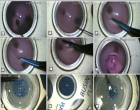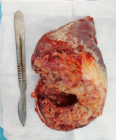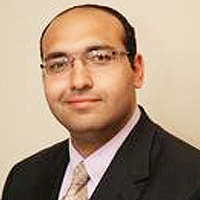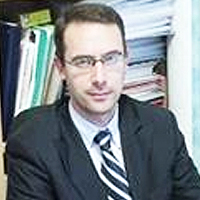Abstract
Review Article
Fibrinolytic therapy with tPA failed because it was based on a flawed concept
Victor Gurewich*
Published: 16 June, 2020 | Volume 5 - Issue 2 | Pages: 131-135
Fibrinolytic therapy has become synonymous with tissue plasminogen activator (tPA) based on the belief that tPA alone was responsible for natural fibrinolysis. Although this assumption was belied from the outset by disappointing clinical results, it persisted, eventually causing fibrinolysis to be discredited and replaced by an endovascular procedure. Since time to reperfusion is the critical determinant of outcome, which in acute myocardial infarction (AMI) means within two hours, a time-consuming hospital procedure is ill-suited as first line treatment. For this purpose, fibrinolysis is more fitting. The assumption that tPA is responsible for fibrinolysis is contradicted by published findings. Instead, tPA ‘s function is limited to the initiation of fibrinolysis, which is continued by urokinase plasminogen activator (uPA) and that has the dominant effect. tPA and uPA gene deletion and clot lysis studies showed the activators have complementary functions, requiring both for a full effect at fibrin-specific doses. They are also synergistic in combination thereby requiring lower doses for efficacy. A clinical proof of concept study in 101 AMI patients who were treated with a 5 mg bolus of tPA followed by a 90 minute infusion of prouPA, the native form of uPA. A near doubling of the 24 h TIMI-3 infarct artery patency rate was obtained compared to that in the best of the tPA trials (GUSTO). In further contrast to tPA, there were no reocclusions and the mortality was only 1% [1]. A sequential combination of both activators, mimicking natural fibrinolysis, holds promise to significantly improve the efficacy and safety of therapeutic fibrinolysis.
Read Full Article HTML DOI: 10.29328/journal.jccm.1001099 Cite this Article Read Full Article PDF
Keywords:
Endogenous fibrinolysis; tPA; uPA; Fibrinolytic therapy
References
- Zarich SW, Kowalchuk GJ, Weaver WD, Loscalzo J, Sassower M, et al. for the PATENT Study Group. Sequential combination thrombolytic therapy for acute myocardial infarction: results of the pro-urokinase and t-PA enhancement of thrombolysis (PATENT) trial. J Am Coll Cardiol. 1995; 26: 374-379. Pubmed: https://www.ncbi.nlm.nih.gov/pubmed/7608437
- Kuhn TS. Revolutionary view of the history of science: The structure of scientific revolutions. The Physics Teacher. 1967; 172.
- Flameng W, Lesaffre E, Vanhaecke J. Determinants of infarct size in nonhuman primates. Bas Res Cardiol. 1990; 85: 392-403. Pubmed: https://www.ncbi.nlm.nih.gov/pubmed/2241769
- Brodie BR, Webb J, Cox DA for the EMERALD Investigators. Impact of time to treatment on myocardial reperfusion and infarct size with primary percutaneous coronary intervention for acute myocardial infarction. Am J Cardiol. 2007; 99: Pubmed: https://www.ncbi.nlm.nih.gov/pubmed/17560875
- DeLuca G, Ernst N, Zijlstra F, van 't Hof AW, Hoorntje JC, et al. Preprocedural TIMI flow and mortality in patients with acute myocardial infarction treated by primary angioplasty. J Am Coll Cardiol. 2004; 43: 1363-1367. Pubmed: https://www.ncbi.nlm.nih.gov/pubmed/15093868
- Antoniucci D, Valenti R, Migliorini A, Moschi G, Trapani M, et al. Relation of time to treatment and mortality in patients with acute myocardial infarction undergoing primary coronary angioplasty. Am J Cardiol. 2002; 89: 1248-1252. Pubmed: https://www.ncbi.nlm.nih.gov/pubmed/12031722
- Stone GW, Gersh BJ. Facilitated angioplasty: paradise lost. Lancet. 2006; 367: 543-546. Pubmed: https://www.ncbi.nlm.nih.gov/pubmed/16488779
- Husain SS, Lipinski B, Gurewich V. Rapid purification of high affinity plasminogen activator from human plasma by specific adsorption on fibrin-celite. Proc Nat Acad Sci (USA). 1981; 78: 4265-4269. Pubmed: https://www.ncbi.nlm.nih.gov/pubmed/6270665
- Gruppo Italiano Per Lo Studio Della Sopravvivenza Nell’Infarto Miocardico. GISSI-2: A factorial randomised trial of alteplase versus streptokinase and heparin versus no heparin among 12,490 patients with acute myocardial infarction. Lancet. 1990; 336: 65-75. Pubmed: https://www.ncbi.nlm.nih.gov/pubmed/1975321
- ISIS-3 Third International Study of Infarct Survival Collaborative Group. ISIS3: a randomized comparison of streptokinase vs tissue plasminogen activator vs anistreplase and of aspirin plus heparin vs aspirin alone among 41,299 cases of suspected acute myocardial infarction. Lancet. 1992; 339: 65-71. Pubmed: https://pubmed.ncbi.nlm.nih.gov/1347801/
- The GUSTO Investigators. An international randomized trial comparing four thrombolytic strategies for acute myocardial infarction. N Eng J Med. 1993; 329: 673-682. Pubmed: https://pubmed.ncbi.nlm.nih.gov/8204123
- Brophy JM, Joseph L. Placing trials in context using Bayesian analysis. GUSTO revisited by Reverend Bayes. JAMA. 1995; 273: 871-875. Pubmed: https://pubmed.ncbi.nlm.nih.gov/7869558/
- Chandler WL, Jascur ML, Henderson PJ. Measurement of different forms of tissue plasminogen activator in plasma. Clin Chem. 2000; 46: 38-46. Pubmed: https://www.ncbi.nlm.nih.gov/pubmed/10620570
- Baglin TP, Landown R, Frasson R, Huntington JA. Discovery and characterization of an antibody directed against exosite 1 of thrombin. J Thromb Haemos. 2016; 14: 137142. Pubmed: https://pubmed.ncbi.nlm.nih.gov/26469093
- Vaughan DE, Vautloutle E, Collen D. Urokinase binds to platelets through a specific saturable, low affinity mechanism. Fibrinolysis. 1990; 4: 141.
- Gurewich V, Johnstone M, Loza JP, Pannell R. Pro-urokinase and prekallikrein are both associated with platelets: implications for the intrinsic pathway of fibrinolysis and for therapeutic thrombolysis. FEBS Lett. 1993; 318: 317-321. Pubmed: https://www.ncbi.nlm.nih.gov/pubmed/8440390
- Grau E, Moroz LA. Fibrinolytic activity of normal human blood monocytes. Thromb Res. 1989; 53: 145-162. Pubmed: https://www.ncbi.nlm.nih.gov/pubmed/2922705
- Vassalli JD, Baccino D, Belin D: A cellular binding site for the Mr 55,000 form of the human plasminogen activator, urokinase. J Cell Biol. 1985; 100: 86-92. Pubmed: https://www.ncbi.nlm.nih.gov/pubmed/3880760
- Collen D. The plasminogen (fibrinolytic) system. Thromb Haemost. 1999; 82: 259-270. Pubmed: https://www.ncbi.nlm.nih.gov/pubmed/10605712
- Longstaff C, Kolev K. Basic mechanisms and regulation of fibrinolysis. J Thromb Haemost. 2015; 13: S98-S105. Pubmed: https://pubmed.ncbi.nlm.nih.gov/26149056
- Singh I, Burnand KG, Collins M, Luttun A, Collen D, et al. Failure of thrombus to resolve in urokinase-type plasminogen activator gene-knockout mice: rescue by normal bone marrow-derived cells. Circulation. 2003; 107: 869-875. Pubmed: https://www.ncbi.nlm.nih.gov/pubmed/12591758
- Bugge TH, Flick MJ, Danton MJS, Daugherty CC, Romer J, et al. Urokinase-type plasminogen activator is effective in fibrin clearance in the absence of its receptor or tissue-type plasminogen activator. Proc Natl Acad Sci USA. 1996; 93: 5899-5904. Pubmed: https://www.ncbi.nlm.nih.gov/pubmed/8650190
- Rijken DC, Hoylaerts M, Collen D. Fibrinolytic properties of one-chain and two-chain human extrinsic (tissue-type) plasminogen activator. J Biol Chem. 1982; 257: 2920-2925. Pubmed: https://www.ncbi.nlm.nih.gov/pubmed/7199525
- Medved L, Nieuwenhuizen W. Molecular mechanisms of initiation of fibrinolysis by fibrin. Thromb Haemost. 2003; 89: 409-419. Pubmed: https://www.ncbi.nlm.nih.gov/pubmed/12624622
- Pannell R, Black J, Gurewich V. The complementary modes of action of tissue plasminogen activator (t-PA) and pro-urokinase (pro-UK) by which their synergistic effect on clot lysis may be explained. J Clin Invest. 1988; 81: 853-859. Pubmed: https://www.ncbi.nlm.nih.gov/pubmed/2963831
- Collen D, Stassen JM, Stump DC, Verstraete M. Synergism of thrombolytic agents in vivo. Circulation. 1986; 74: 838-842. Pubmed: https://www.ncbi.nlm.nih.gov/pubmed/3093116
- Gurewich V, Pannell R. Synergism of tissue-type plasminogen activator (tPA) and single-chain urokinase-type plasminogen activator (scu-PA) on clot lysis in vitro and a mechanism for this effect. Thromb Haemost. 1987; 57: 372-78. Pubmed: https://www.ncbi.nlm.nih.gov/pubmed/3116707
- Voskuilen M, Vermond A, Veeneman GH, et al. Fibrinogen lysine residue Aα157 plays a crucial role in the fibrin-induced acceleration of plasminogen activation, catalyzed by tissue-type plasminogen activator. J Biol Chem. 1987; 262: 5944-5946. Pubmed: https://www.ncbi.nlm.nih.gov/pubmed/3106345
- Hoylaerts M, Rijken DC, Lijnen HR, Collen D. Kinetics of the activation of plasminogen by human tissue plasminogen activator. Role of fibrin. J Biol Chem. 1982; 257: 2912-2919. Pubmed: https://www.ncbi.nlm.nih.gov/pubmed/7199524
- Marder VJ, Sherry S. Thrombolytic therapy: current status. N Engl J Med. 1988; 318: 1512-1520. Pubmed: https://www.ncbi.nlm.nih.gov/pubmed/3285216
- Harpel PC, Chang TS, Verderber E. Tissue plasminogen activator and urokinase mediate the binding of Glu-plasminogen to plasma fibrin I. Evidence for new binding sites in plasmin-degraded fibrin I. J Biol Chem. 1985; 260: 4432-4440. Pubmed: https://www.ncbi.nlm.nih.gov/pubmed/3156857
- Suenson E, Lützen O, Thorsen S. Initial plasmin-degradation of fibrin as the basis of a positive feed-back mechanism in fibrinolysis. Eur J Biochem. 1984; 140: 513-522. Pubmed: https://pubmed.ncbi.nlm.nih.gov/6233145
- Liu J, Gurewich V. Fragment E-2 from fibrin substantially enhances prourokinase-induced glu-plasminogen activation. A kinetic study using a plasminresistant mutant pro-urokinase (Ala-158-rpro-UK). Biochemistry. 1992; 31: 6311-6317. Pubmed: https://www.ncbi.nlm.nih.gov/pubmed/1385727
- Petersen LC. Kinetics of reciprocal pro-urokinase/plasminogen activation. Stimulation by a template formed by the urokinase receptor bound to poly (Dlysine). Eur J Biochem. 1997; 245: 316-323. Pubmed: https://www.ncbi.nlm.nih.gov/pubmed/9151959
- Liu J, Gurewich V. A comparative study of the promotion of tissue plasminogen activator and pro-urokinase-induced plasminogen activation by fragments D and E-2 of fibrin. J Clin Invest. 1991; 88: 2012-2017. Pubmed: https://www.ncbi.nlm.nih.gov/pmc/articles/PMC295789/
- Weaver WD, Hartmann JR, Anderson JL, Reddy PS, Sobolski JC, et al. New recombinant glycosylated prourokinase for treatment of patients with acute myocardial infarction. J Am Coll Cardio. 1994; 241: 1242-1248. Pubmed: https://pubmed.ncbi.nlm.nih.gov/7930246/
- GUSTO Angiographic Investigators. The effects of tissue plasminogen activator, streptokinase, or both on coronary-artery patency, ventricular function, and survival after acute myocardial infarction. N Engl J Med. 1993; 329: 1615-1622. Pubmed: https://pubmed.ncbi.nlm.nih.gov/8232430/
Similar Articles
-
Thrombolysis, the only Optimally Rapid Reperfusion TreatmentVictor Gurewich*. Thrombolysis, the only Optimally Rapid Reperfusion Treatment. . 2017 doi: 10.29328/journal.jccm.1001010; 2: 029-034
-
Fibrinolytic therapy with tPA failed because it was based on a flawed conceptVictor Gurewich*. Fibrinolytic therapy with tPA failed because it was based on a flawed concept. . 2020 doi: 10.29328/journal.jccm.1001099; 5: 131-135
Recently Viewed
-
Exophthalmos Revealing a Spheno Temporo Orbital MeningiomaHassina S*, Krichene MA, Hazil Z, Bekkar B, Hasnaoui I, Robbana L, Bardi S, Akkanour Y, Serghini L, Abdallah EL. Exophthalmos Revealing a Spheno Temporo Orbital Meningioma. Int J Clin Exp Ophthalmol. 2024: doi: 10.29328/journal.ijceo.1001055; 8: 001-003
-
Value of electrocardiographic T wave inversion in lead aVL in prediction of Mid Left Anterior Descending Stenosis in patients with stable Coronary Artery diseaseGehan Magdy*,Awad Yousef. Value of electrocardiographic T wave inversion in lead aVL in prediction of Mid Left Anterior Descending Stenosis in patients with stable Coronary Artery disease. J Cardiol Cardiovasc Med. 2017: doi: 10.29328/journal.jccm.1001015; 2: 056-062
-
Calciphylaxis in HemodialysisLuca Sgarabotto*, Paola Baldini Anastasio, Nicola Marchionna, Monica Zanella. Calciphylaxis in Hemodialysis. J Clini Nephrol. 2023: doi: 10.29328/journal.jcn.1001107; 7: 044-046
-
Metabolic syndrome: A case reportDragan Klaric,Marta Martinis*,Marta Klaric. Metabolic syndrome: A case report. Ann Clin Endocrinol Metabol. 2021: doi: 10.29328/journal.acem.1001022; 5: 031-035
-
Utilization of Molecular Simulation Applications for Stability Testing of Anthocyanin Compounds in Black ElderberryRichard Benedict*. Utilization of Molecular Simulation Applications for Stability Testing of Anthocyanin Compounds in Black Elderberry. Arch Biotechnol Biomed. 2023: doi: 10.29328/journal.abb.1001035; 7: 012-017
Most Viewed
-
Evaluation of Biostimulants Based on Recovered Protein Hydrolysates from Animal By-products as Plant Growth EnhancersH Pérez-Aguilar*, M Lacruz-Asaro, F Arán-Ais. Evaluation of Biostimulants Based on Recovered Protein Hydrolysates from Animal By-products as Plant Growth Enhancers. J Plant Sci Phytopathol. 2023 doi: 10.29328/journal.jpsp.1001104; 7: 042-047
-
Sinonasal Myxoma Extending into the Orbit in a 4-Year Old: A Case PresentationJulian A Purrinos*, Ramzi Younis. Sinonasal Myxoma Extending into the Orbit in a 4-Year Old: A Case Presentation. Arch Case Rep. 2024 doi: 10.29328/journal.acr.1001099; 8: 075-077
-
Feasibility study of magnetic sensing for detecting single-neuron action potentialsDenis Tonini,Kai Wu,Renata Saha,Jian-Ping Wang*. Feasibility study of magnetic sensing for detecting single-neuron action potentials. Ann Biomed Sci Eng. 2022 doi: 10.29328/journal.abse.1001018; 6: 019-029
-
Pediatric Dysgerminoma: Unveiling a Rare Ovarian TumorFaten Limaiem*, Khalil Saffar, Ahmed Halouani. Pediatric Dysgerminoma: Unveiling a Rare Ovarian Tumor. Arch Case Rep. 2024 doi: 10.29328/journal.acr.1001087; 8: 010-013
-
Physical activity can change the physiological and psychological circumstances during COVID-19 pandemic: A narrative reviewKhashayar Maroufi*. Physical activity can change the physiological and psychological circumstances during COVID-19 pandemic: A narrative review. J Sports Med Ther. 2021 doi: 10.29328/journal.jsmt.1001051; 6: 001-007

HSPI: We're glad you're here. Please click "create a new Query" if you are a new visitor to our website and need further information from us.
If you are already a member of our network and need to keep track of any developments regarding a question you have already submitted, click "take me to my Query."




















































































































































